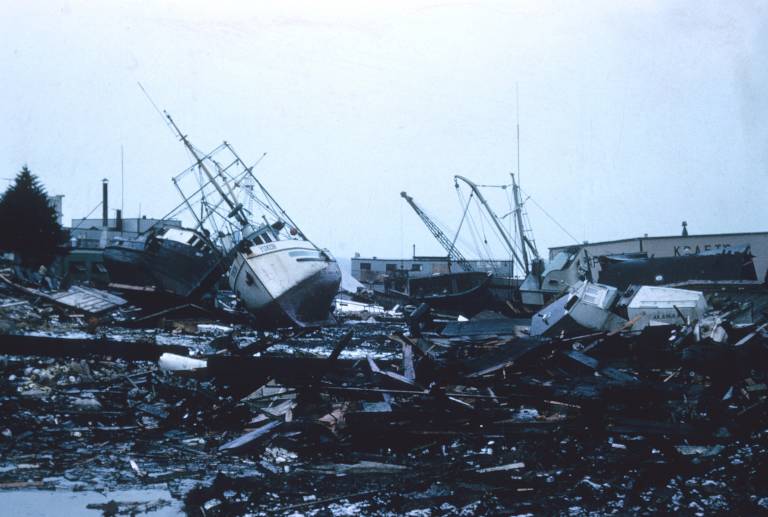Building Resilience: Tsunami simulator revolutionizes design for safer structures
20 November 2023
Professor Tiziana Rossetto partnered with HR Wallingford to create Europe's largest tsunami simulator, seeking insights into how tsunamis affect structures and coastal defenses for global disaster management advancements and assist in the design of safer buildings.

In a groundbreaking collaboration between University College London (UCL) and HR Wallingford, hydraulic engineering specialists have unveiled Europe's largest tsunami simulator. Professor Tiziana Rossetto, a leading figure in earthquake engineering at UCL, played a crucial role in developing this cutting-edge facility, poised to revolutionize our understanding of tsunamis and enhance disaster management worldwide.
On CNN Transformers, Professor Tiziana Rossetto elaborated on the transformative potential of their research, underscoring its broader implications for building and urban design in tsunami-prone areas. The simulator stands as a testament to human ingenuity in harnessing cutting-edge technology to confront and mitigate the destructive forces of nature.
The Tsunami Simulator, presented at HR Wallingford's Fast Flow Facility in Oxfordshire, UK, is part-funded by a €1.9 million European Research Council Starting Grant named 'URBAN WAVES.' This collaborative effort aims to investigate the impact of tsunamis on buildings and coastal defenses, ultimately leading to improved engineering guidelines.
Hydraulic engineering specialists at HR Wallingford have crafted the most realistic tsunami simulator to date. Utilising nearly 70,000 liters of water in a 70m long x 4m wide channel, the simulator produces meticulously simulated tsunamis, mimicking the destructive forces of these natural phenomena.
Professor Tiziana Rossetto's team from UCL EPICentre and researchers from HR Wallingford will use the facility to conduct comprehensive tests on coastal defenses and urban environments. The results are expected to provide critical insights into tsunami resilience, offering invaluable guidance for disaster management on a global scale.
The new generator utilises a pneumatic system adapted from methods used for model tides in hydraulic models, akin to those found in large leisure or surfing pools. Unlike conventional storm waves simulated using piston motion wave machines, the Tsunami Simulator generates longer waves that behave differently in both natural and laboratory settings.
Professor Tiziana Rossetto highlights the significance of the research, stating "Tsunamis can be exceptionally destructive when they hit buildings, yet we really don't know a great deal about how the massive horizontal forces they generate act on buildings to cause damage." She further emphasises the challenge of accurately modeling these forces on various structures and understanding their dynamics in clustered coastal towns and cities.
The anticipated outcome of this research is the development of engineering guidelines that can significantly mitigate the impact of tsunamis on both human lives and the surrounding land. By unraveling the mysteries of these devastating natural phenomena, the collaboration between UCL and HR Wallingford holds the promise of safer building designs and more resilient coastal defenses, marking a crucial step forward in disaster preparedness and response.
 Close
Close

